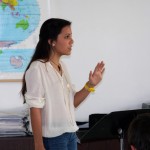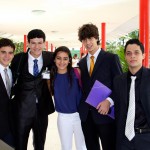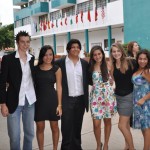Model United Nations
Model United Nations is an authentic simulation of the UN General Assembly, UN Security Council, or other multilateral body, which catapults students into the world of diplomacy and negotiation. In Model UN, students step into the shoes of ambassadors of UN member states, from Afghanistan to Zimbabwe to debate current issues on the Organization’s vast agenda. The students, better known as “delegates” in Model UN, prepare draft resolutions, plot strategy, negotiate with supporters and adversaries, resolve conflicts, and navigate the UN’s rules of procedure-all in the interest of mobilizing “international cooperation” to resolve problems that affect almost every country on Earth.
Student participants in CIPLC MUN attend conferences in Venezuela.
Before playing out their ambassadorial roles in Model UN, students do research on the particular global problems to be addressed. The problems are drawn from today’s headlines. Model UN participants learn how the international community acts on its concerns about:
- peace and security
- human rights
- the environment
- food and hunger
- economic development
- globalization
- and more
Model UN “delegates” also look closely at the needs, aspirations, and foreign policy of the country they will “represent” at the event. The insights they gain from their exploration of
- history
- geography
- mathematics
- culture
- economics
- and science
For over 50 years now, teachers and students have benefited from and enjoyed this interactive learning experience that not only involves young people in the study and discussion of global issues, but also encourages the development of skills useful throughout their lives:
- research
- writing
- public speaking
- problem solving
- consensus building
- conflict resolution
- compromise and cooperation
The popularity of Model UN has contributed to the rapid growth of this activity over several decades, and today upwards of 200,000 high school and college/university students participate in a Model UN each year. Some are classroom exercises, others school-wide, and still others regional, national, or international. Those in the last group are called “conferences” because of their larger sizes bringing participants from all over.



